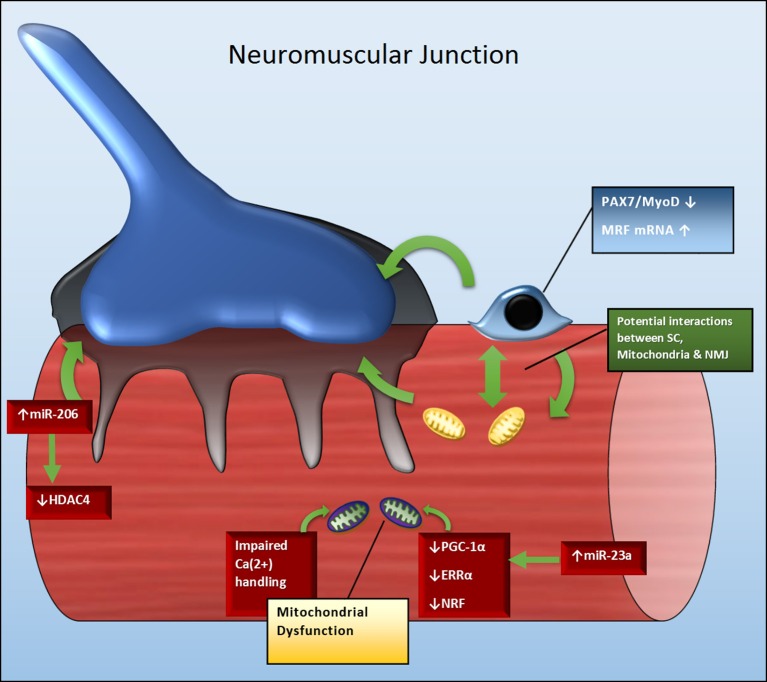Figure 1.
Potential crosstalk between SC, mitochondria and miRNAs to influence NMJ and skeletal muscle health in ALS. Green arrows indicate regulatory relationships between molecules, as well as between molecules and structures. A reduction in Pax7 and MyoD may contribute to the attenuation in SC activation and number. SCs not only maintain skeletal muscle fiber size and function, but those located near the NMJ also play role in maintaining NMJ stability. Similarly, downregulation of molecular targets including PGC-1α, ERRα, and NRF may impair mitochondrial biogenesis and function. As mitochondria play role in maintaining calcium homeostasis and muscle repair, their dysregulation may also contribute to skeletal muscle and NMJ deterioration. Perturbations in miRNAs, such as miR-206, may negatively impact regenerative capacity and NMJ stability via their control over MRFs (myogenic regulatory factors) and HDAC4 transcription. Additionally, the upregulation of miRNA-23a may negatively impact the PGC-1α signaling cascade and mitochondrial function; as consequence indirectly contributing to impaired skeletal muscle repair and NMJ stability.

